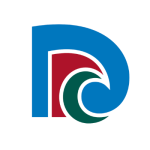Give large ships wide berth; Deputy Harbourmaster
.jpg)
Maritime officials say too many boaties are risking injury – or worse – by anchoring or fishing in places that put them at risk from the large ships visiting Northland harbours.
The council’s Deputy Harbourmaster, Chidambaram Surendran, says there have been a number of close calls recently, including:
- A small, stationary boat with recreational fishermen on board which ignored warning whistle blasts from a 261-metre long cruise ship, forcing it to take evasive action in restricted waters
- A kayaker paddling furiously in front of a second cruise ship
- People setting crayfish pots in busy shipping areas
Mr Surendran says the problems are worst in the Bay of Islands – where very large cruise ships are visiting in increasing numbers – and in the Whangarei Harbour, which sees many deep draft tankers and freighters visiting either the Marsden Pt oil refinery or Northport.
The problem has got so bad in the Bay of Islands that the council’s Regional Harbourmaster Jim Lyle recently issued a directive banning anchoring in part of the Bay of Islands when the larger vessels are moving within the harbour.
Mr Surendran says in many cases people are fishing from smaller boats and are so engrossed in what they’re doing, they don’t even realise a large ship is bearing down on them.
He says with some of the larger ships visiting Northland weighing tens of thousands of tonnes and about as long as Auckland’s Sky Tower is tall, they are obviously nowhere near as manoeuvrable as much smaller craft.
“Not only are these big ships limited by their very deep drafts and unable to take evasive action easily, small vessels can also completely disappear from view under a larger ship’s bow from as far as 200 metres away.”
Mr Surendran says with visibility an obvious safety issue, smaller vessels – including kayaks - should not try to cut across the bow of a moving larger ship due to the very real dangers involved.
He says the recent harbourmaster’s directive applies to all vessels in the Bay of Islands Harbour, which is inside the line between Cape Wiwiki, Ninepin Island and Cape Brett.
Mr Surendran says the ban applies when the larger ship is either approaching to pick up a regional council pilot, approaching to drop anchor or picking up anchor to leave the harbour.
“This bans any vessel from anchoring within any sector of the Waitangi Sector light, from the 10 metre depth contour line adjacent to Hermione Rock, out to three nautical miles from Tapeka Point towards Ninepin Island when a vessel over 500 gross tonnes is moving within the harbour.”
“Any vessel that is anchored in this area must keep a sharp lookout for approaching or departing vessels. These usually arrive early morning and leave late afternoon or early evening, but can move at any time.”
Mr Surendran says if a cruise ship is spotted, smaller vessels should immediately pick up anchor and move away from the limits of the sector light.
Similarly, if any pilot vessel approaches and signals a smaller vessel that it is impeding the safe navigation of another ship, the smaller craft must immediately pick up anchor and move away from the limits of the sector light.
Meanwhile, he says in Whangarei Harbour, a permanent prohibited area also exists for safety reasons around the Marsden Pt oil refinery berths and access to an area around the nearby Northport wharf may also be off limits from time to time.
As well as keeping an eye out for other vessels and staying out of prohibited areas, boaties also needed to steer clear of places where anchoring may be banned due to underwater cables or other dangers.
Mr Surendran says a raft of information is available for those heading out on the water in Northland from the regional council’s website via: www.nrc.govt.nz/onthewater
